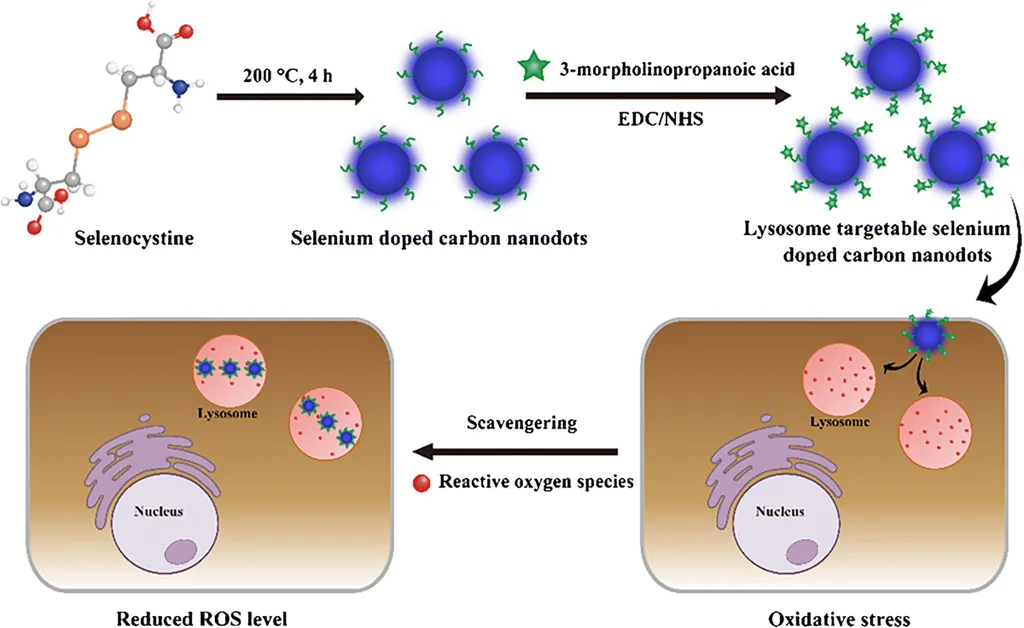In a groundbreaking development that could revolutionize the detection of elemental selenium in everyday consumables, researchers have harnessed the power of carbon nanodots (CNDs) synthesized through the Maillard reaction. This innovative approach, detailed in a recent study published in the journal ‘Nanomaterials’ (translated as ‘Nanomaterials’), offers a rapid, reliable, and environmentally friendly method for detecting selenium at trace levels in water and carbonated beverages.
At the helm of this research is Arjun Muthu, a doctoral student at the Doctoral School of Nutrition and Food Science, University of Debrecen in Hungary. Muthu and his team have developed a novel sensing platform using CNDs produced from the Maillard reaction between glucose and glycine. “The Maillard reaction is a well-known process in food chemistry, but its application in synthesizing carbon nanodots for sensing applications is quite novel,” Muthu explained. The resulting CNDs are water-dispersible and strongly fluorescent, with an average particle size of approximately 3.90 nm.
The study’s significance lies in its ability to address a critical gap in the detection of elemental selenium (Se0), particularly at the nanoscale. Selenium is an essential trace element with applications in antioxidant redox regulation, thyroid hormone metabolism, and cancer prevention. However, detecting Se0 in real samples has been challenging due to the limitations of current analytical methods, which are often time-consuming and labor-intensive.
Muthu’s method employs CNDs as fluorescent probes for the selective detection of Se0. The sensor demonstrates a wide linear detection range (0–12.665 mmol L−1), with a low detection limit (LOD) of 0.381 mmol L−1 and a quantification limit (LOQ) of 0.465 mmol L−1. The validation of the sensor with spiked real samples, including ultra-pure water, tap water, and soft drinks, yielded high recoveries (98.6–108.1%) and low relative standard deviations (<3.4%).The implications of this research are far-reaching, particularly for the food and beverage industry. "This method provides a simple, reliable, and environmentally friendly sensing platform for trace-level Se0 detection in complex food and beverage matrices,” Muthu noted. The ability to rapidly and accurately detect selenium in consumables can enhance food safety and quality control, ensuring that products meet regulatory standards and consumer expectations.
Moreover, the use of CNDs synthesized through the Maillard reaction opens new avenues for the development of sustainable and cost-effective sensing technologies. As Muthu and his team continue to refine their method, the potential applications in other sectors, such as environmental monitoring and biomedical diagnostics, become increasingly promising.
In conclusion, this research represents a significant advancement in the field of nano-sensors and fluorescence sensing. By leveraging the Maillard reaction to synthesize carbon nanodots, Muthu and his colleagues have developed a novel approach that could shape the future of selenium detection and beyond. As the scientific community continues to explore the potential of nanotechnology, this study serves as a testament to the innovative solutions that emerge from interdisciplinary research.

